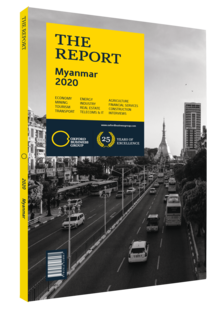Christopher Loh, CEO, UAB Bank: Interview

Interview: Christopher Loh
Where do you see the greatest potential for growth in Myanmar’s banking sector?
CHRISTOPHER LOH: Myanmar is a cash-based society, and the road towards modern methods of banking will require a change of mindset. One way to catalyse this is to undermine pre-existing perceptions. Take, for instance, with our mobile banking platform – we have eliminated the fees for personal transfer across all our branches. This practice had been standard in the industry for a long time, but retail customers should not be paying fees like this. That said, this is not about one bank. The largest constraint to growth is that customers simply cannot make interbank transfers easily, and this must change for banks to remain relevant. The Myanmar Payment Union is working on this with local banks, and we are also beginning to facilitate this, though unfortunately only via ATM. It is this focus on the retail aspects of banking that will support the growth of the sector.
Financing to small and medium-sized enterprises is another growth area. Not only can it help diversify the portfolio and prevent over-concentration, it allows us to support the growth of local enterprises, which is critical for economic growth. While corporate banking will remain advantageous for local banks, an over-concentration on corporate banking entails susceptibility to the whims of economic cycles and also an over-reliance on a handful of major clients. In addition, the consumer financing segment is very attractive in Myanmar. Home loans are a great example – this enables individuals to purchase their own residence instead of paying for rent. Home ownership has a lot of social benefits and support wealth accumulation for the owners. For the bank, it is a secure long-term asset and a good quality portfolio if managed prudently.
How could regulatory reform advance the industry?
LOH: The regulators are working to implement many changes to the sector, with QR codes being a great example. As Myanmar is relatively late in adopting this, there is an opportunity for us to leapfrog straight to the newest technology. However, this is not necessarily happening. Instead, some industry players are pushing for the adoption of cheques, which is an outdated and insecure means of transaction.
Regarding new concepts and products, there should be a speedier process or a sandbox that enables banks to innovate. The merging of lifestyle and banking appears to be a natural development for Myanmar. WeChat in China is a great example of the concept of diverse integration within a single platform, under a single brand, as part of a single ecosystem. It is this same logic of convenience and service that is gaining momentum in the banking sector.
That said, it is crucial for banks to work with the central bank towards prudential regulatory reforms, such as a strong capital adequacy ratio and effective corporate governance structures. The prudential regulations published in July 2017 are pushing the industry towards ensuring compliance and strength of capital. For instance, these include the introduction of term loans that mitigate endless overdrafts.
What does the liberalisation of the insurance sector mean for banking in Myanmar?
LOH: It is positive for the country as a whole as it will help attract foreign investment, but also a great boon for the banking sector, in that it will open up the possibility of bancassurance. Liberalisation will bring innovative and practical products to the sector. For banks to manage their risk, they need developed insurance products. We already benefit from having a vibrant domestic sector across the range of insurance products, from fire to credit insurance. Insurance products are very specialised and firms need global economies of scale to keep prices low, as relying only on local firms cannot provide an adequate service to customers. However, it is important to ensure the development of strong domestic banks and not to over-liberalise the sector.
You have reached the limit of premium articles you can view for free.
Choose from the options below to purchase print or digital editions of our Reports. You can also purchase a website subscription giving you unlimited access to all of our Reports online for 12 months.
If you have already purchased this Report or have a website subscription, please login to continue.

